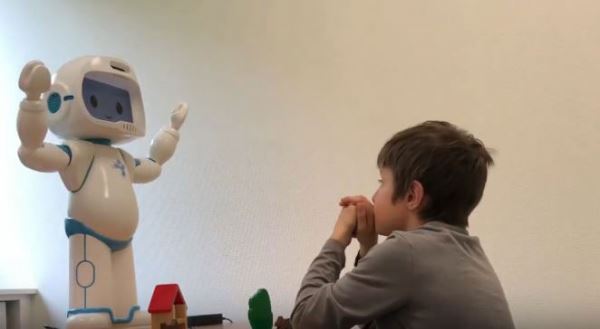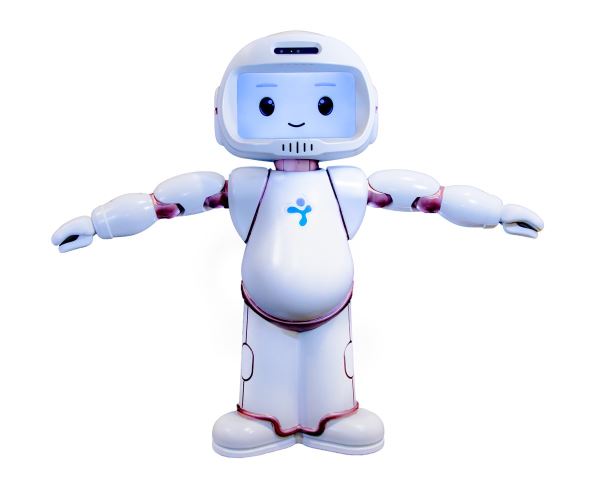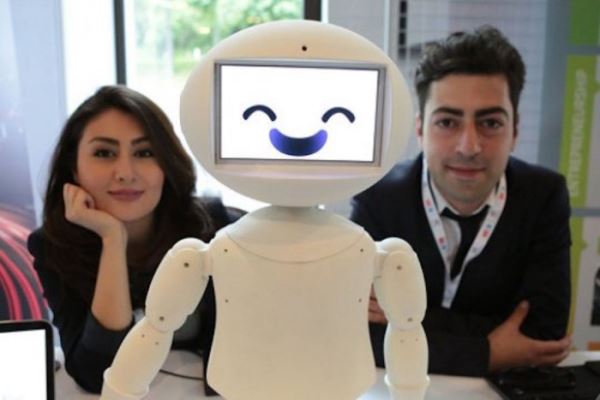Autism spectrum disorder is a condition that impacts the way a child behaves, socialises, or interacts with others.
No cure exists for autism and there is no one-size-fits-all treatment. The goal of treatment is to maximise a child's ability to function and improve their quality of life.
Early intervention during the preschool years can help a child learn critical social, communication, functional and behavioural skills.
About five years ago while working with the University of Luxembourg, scientists Dr Pouyan Ziafati and Dr Aida Nazarikhorram discovered that robots could be useful in the development of children diagnosed with autism.
“But there was no product on the market that therapists could use and customise for the children,” explains Dr Nazarikhorram, now Co-founder and Chief Communication Officer of startup LuxAi.
They were convinced their technology could be used to assist those children.
So, in collaboration with university researchers, the pair created a humanoid robot called QTrobot to assist in teaching new skills to children with autism.
QTrobot works as a tool for autism professionals and educators to increase engagement and collaboration – and to help keep children calm and motivated.
First prototype developed
The first prototype was developed in 2017, using dedicated hardware and software made in Luxembourg.
It was then given to a leading therapist to trial it with children.
The therapist observed that children with autism look longer at robots than they do at a person or teacher and are more comfortable in interacting with a robot.
“Children really progress faster,” Dr Nazarikhorram told Inside Robotics.
“Our robots are easy to use and easy to customise – a therapist can choose a program based on a child’s needs.”
About 63cm tall and weighing just 5kg, QTrobot is about the same size as a 2-3-year-old toddler.
The expressive little bot is user-friendly and easy to program – you don’t have to be an IT expert to operate it. The programming system is very intuitive. Once you understand the basics, it pretty much programs itself.
More effective than a tablet or computer
And because QTrobot has been built with its own internal hotspot, no Internet connection is needed in remote areas or when Internet access is limited.
The robot comes with a range of different programs aimed at engaging children and encouraging them to express emotions.
A child’s interaction with the robot is proven to be more effective than from learning with a tablet or computer.
“We’ve noticed that children show fewer disruptive behaviours and are able to maintain concentration for much longer periods,” says Dr Nazarikhorram.
“They need fewer breaks and they find it easier to focus. The kids are much more likely to listen to QT than an adult.”
According to Dr Nazarikhorram, parents have noticed how their children have advanced – including speech, pronunciation and reading.
“It can also lead to better relationships with parents,” she adds.
Different languages and accents
QTRobot is suitable for children from 2½-3 years up to 16 years and the software is constantly evolving. Regular updates are provided for users.
It is available in more than 30 different languages, with a variety of different voices and accents.
And importantly, it can be programmed to conform with cultural differences across countries and regions.
“Some gestures (such as a thumbs-up) can have different meanings depending on the country,” Dr Nazarikhorram says.
According to Dr Nazarikhorram, the incidence of autism is growing rapidly worldwide and therapists are struggling to keep pace.
Latest data shows the number of children with autism has increased nearly three times in the past five years, due to a variety of factors.
This year, one in every 54 children will be diagnosed with the condition, says Dr Nazarikhorram.
The rapid growth has created a severe shortage of qualified autism professionals – and besides – not everyone can afford professional help.
That’s where QTrobot may prove a godsend.
Dr Nazarikhorram says robots can bring interventions that are not available in all countries to many more children.
“This is not replacing therapists, this is improving and bringing things that are less expensive to more people to improve their well-being.”
Dr Nazarikhorram says QT is equally effective in educating children with other learning disabilities, including Down Syndrome and Attention Deficit Hyperactivity Disorder (ADHD).
Traditional speech, behavioural and occupational therapies can simply be adapted to QT.
QTrobot comes with several educational curricula targeting various developmental ages and necessary skills for learners to become more mentally developed and more socially interactive and capable.
The curricula are designed by autism specialists and are according to the evidence-based methods of training.
QT is equipped with an Intel NUC7i Single Board Computer and Real Sense Depth Camera as well as built-in WiFi.
Key features include:
-
Speech recognition
-
Stereo speakers
-
High performance microphone
-
Tracking and recognition
-
Emotion detection
-
Gesture recognition
-
Multiple programming language support
-
ROS (Linux/Android) SDK
Innovation awards
Since its launch, QTrobot has won a number of awards globally – including a prestigious CES Innovation Award in 2019.
“The awards have been really heart-warming,” says Dr Nazarikhorram. “It shows people value what we are doing – and it has helped us to gain international recognition.”
Dr Nazarikhorram says LuxAi is aiming to make QTrobot available worldwide, making it accessible for those with special learning needs.
“It’s easy to use, effective and affordable – we hope it will make their lives easier and better.”
QTrobot is now being rolled out to therapists, parents, researchers and educational institutions across the US, Europe and Asia.
And QTrobot is now available in Australia and New Zealand, distributed by Exaptec, a leading supplier of telepresence and social robots.
To learn more or for sales enquiries contact: Nicci Rossouw:


